Your favourite dim sums are crafted by entire teams meticulously trained for the task. Meet the soldiers of good taste
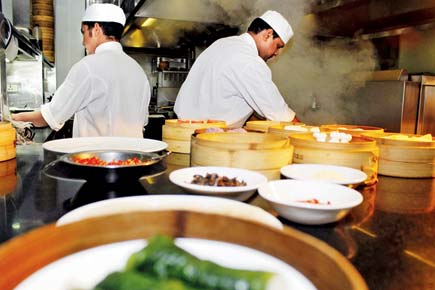
Steamed, fried, baked. Take your pick from shitake mushrooms, cottage cheese, spinach, edamame, or prawn, chicken, pork and mutton. Dim sums are really China’s most loved and versatile cultural export to the world. They spawned a range of legends around them. Have you heard the one about how it was created by chefs of the royal court to touch the heart of the Chinese emperors?
ADVERTISEMENT
The dim sum platter at most Asian restaurants is the top selling dish and so, calls for special skills. So specialised in fact, that most restaurants with a platter to boast have an entirely different team to tackle the mission. And it’s these skilled foot soldiers,
often supervised by a general, who dedicates the day to a process that ensures that the bite-sized dumplings satiate both your taste-buds and soul.
Yauatcha
Types of Dim-sum: 50
Top pick: Sea bass (non-veg), Edamame (veg)
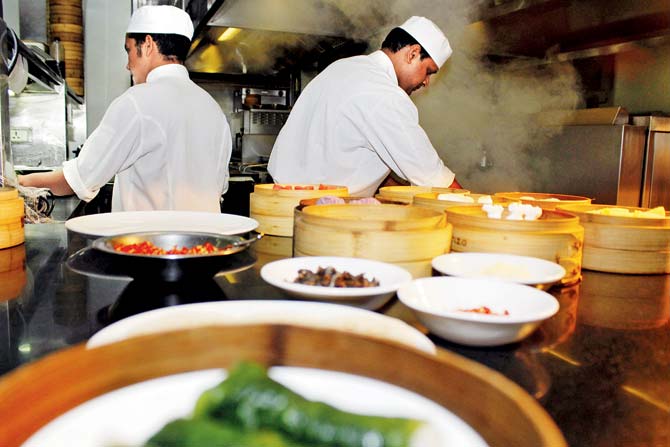
At this BKC fine-dine, dim sums aren’t just the menu’s most delicious. They are a much-revered culinary experience. In fact, says Chef Wang Yixuan, consultant and head chef with Yauatcha India, the restaurant recently released a collection of poetry and short stories that are an ode to the dim sum.
Of the over 50 varieties on the menu, there are even 10 Jain types.
The team of 25 arrives at the kitchen at 11 am. There’s a dedicated section for each task — chopping, filling, folding, preparing the skin and steaming. Chef Wang divides the duties depending on the day’s orders. “To prepare and serve a dim sum requires a certain savoir faire. It needs to be served in the right cutlery and with a compliment of condiments. Since wrapping and folding is more than just a science, every dim sum in the basket has character. This comes when a chef is involved in every step of the preparation,” he says. Every day 2,500 dim sums make it to the plates on Yauatcha tables. Proportions are weighed on a scale and recipes of the Michelin-starred brand are adhered to.
Umame
Types of Dim-sum: 20
Top pick: Chive and prawn (non-veg), edamame (veg)

A little before 7 pm, the kitchen at Farrokh Khambatta’s pan-Asian Churchgate restaurant is already prepping for dinner which will roll out in another hour. While the entire kitchen has a staff of 25, five of these form a special team to ensure the dim sum trail runs smooth. The team, headed by Marzban Amroliwalla, rolls out hundreds of steamed dumplings; each one meticulously hand rolled and flattened in the blink of an eye to be later steamed in the many bamboo baskets stored in the cabinets behind the team.
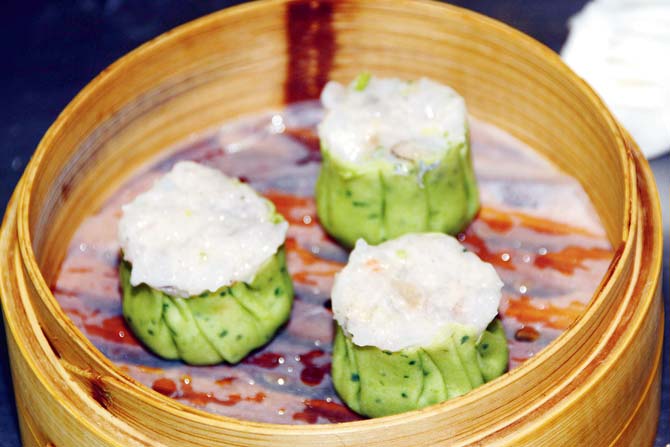
Each member has a specific task. While Prem Bahadur chops the carrots and mashes the corn at lightening speed, Binod Thapa rolls out the dough made of refined flour even as Debilal Bhandari prepares the edmame filling. “Making dim sums requires a craftsmanship. They are not about just filling your tummy, but are meant to whet your appetite. The challenge is to create an artistic piece that’s visually appealing and tempts the tastebuds,” explains Amroliwalla, who was heading the dessert section at the restaurant before being selected by Khambatta to lead the dim sum team two years ago. “Initially, everyone underwent dim sum training. During it, he [Khambatta] noticed that I was good at making the pleats, folds and rolls, and made the cut,” says the 23-year-old. “We rotate our responsibilities to ensure each of us knows every aspect of dim sum-making,” he adds. The team’s veteran is Nun Bahadur Pulami, who has a decade’s experience behind him.
Busy preparing the prawn and chive dim sums, his favourite, Pulami carefully opens the lid of the bamboo basket to check if it’s steamed enough. “The goodness comes from the details. The skin needs to be delicate, yet firm enough to hold the filling. If the dim sum were to appear without the signature ‘pinch’, it would look unappetising,” he says.
Ten years on, there’s still no contempt for the triangular shaped bites of heaven. “Each day is a new experience because it’s a craft that can take a lifetimes to master.”
Lemon Leaf
Types of Dim-sum: 9
Top pick: Prawn har gao (non-veg), shitake and water-chestnuts(veg)
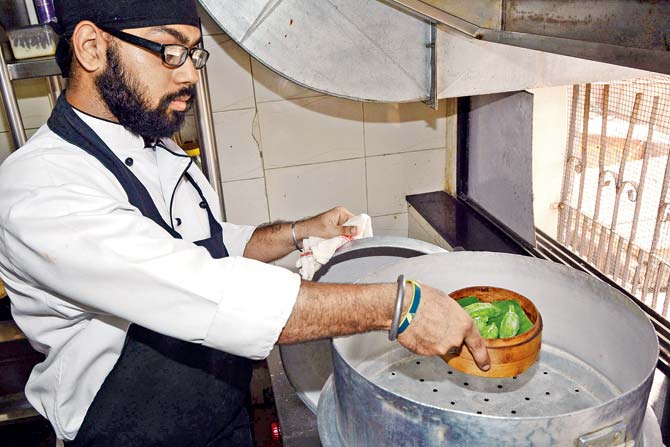
Lemon Leaf, which once wooed everyone in Bandra from Turner Road as Lemon Grass, now has a kitchen at Bandra Talao from where it caters to delivery orders.
On Tuesday at 1 pm, lunch orders have started to trickle in. In the next hour, the team of three rolls out 25 portions. The mise en place has been accomplished and now, what’s nearly an 11-hour shift begins. Ramesh Shreshtha, who calls Darjeeling his home, has been doing this for eight years. He is an artist at work. His tools — eight counters of fillings — at the ready. There’s minced chicken, prawn, spinach, cottage cheese, edamame, mushroom, spring onions — it’s a Cantonese counter all right. On the oven are three steamers, each with a capacity of holding four bamboo boxes. Shreshtha pulls out a vessel and fills it with potato starch and pours spinach puree and then starts kneading. Next to him is Shivam Rai, who assists in rolling out the mounds, while Shreshtha takes over stuffing and wrapping.
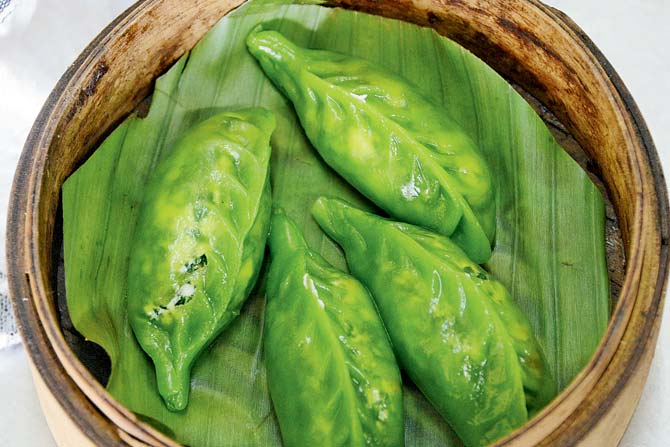
On needing a separate team for the task, head chef Sameer Juvekar says, “Dim sums require a special skill; it is the most demanding job in the kitchen. And very simply, these guys don’t have the time to do anything else.” The techniques displayed are a marvel — knotting itself can be of four kinds. There are banana leaf dim sums and even open dimsums, stuffed with shitake mushrooms and topped with edamame. Shreshtha has been doing just this for eight years, but, he’s not even close to bored.
“This is my skill, my craft. I feel happy doing this. I am never bored, not even tired.”
 Subscribe today by clicking the link and stay updated with the latest news!" Click here!
Subscribe today by clicking the link and stay updated with the latest news!" Click here!






